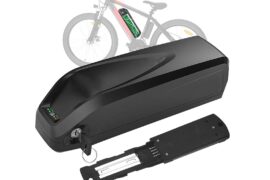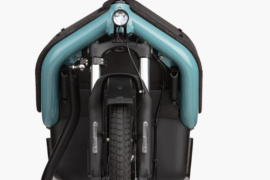The question of whether the UK should allow a doubling of the permitted continuous power rating of eBike systems from 250W to 500W is currently at the forefront of regulatory discussions. This proposal, part of a broader consultation by the government on smarter regulation for electrically assisted pedal cycles (EAPCs), has ignited a debate among cyclists, manufacturers, and environmentalists alike.
The Current State
As it stands, the UK’s regulations cap the continuous power output of eBikes at 250W, aligning with European standards. This limitation ensures that eBikes supplement human power rather than replace it, maintaining the essence of cycling.
The Proposal
The government’s consultation suggests that increasing the power limit to 500W could potentially unlock benefits for riders, particularly those facing challenging terrains or requiring additional assistance. Proponents argue that this change would make eBikes more appealing and accessible to a broader audience, encouraging a shift away from conventional vehicles and contributing to environmental goals.
Zero Start Full Speed Throttle (15.5mph)
The proposed allowance for a zero start throttle up to 15.5mph is something that we lobbied successfully for in 2012 (subsequently overturned when the UK aligned with EU rules in 2016). Many of our less-abled customers felt that their needs had been neglected in this decision and will be delighted to see the return of the throttle. I can inform you that most of these customers do not use the throttle to pop wheelies or burn rubber, they use it on a ‘bad day’ or to help push off while waiting (almost forever) for a knee or hip replacement.
Considerations and Implications
However, such a change is not without its considerations. Doubling the power rating could impact safety standards, requiring revisions to infrastructure and possibly redefining the line between eBikes and more powerful electric vehicles. It raises questions about speed, control, and the interaction between eBikes and other road users.
The Bosch eBike Systems CEO Claus Fleischer has said in response ‘be careful what you wish for’. His fear is understandable because the auto industry has been lobbying against electric bikes for as long as I can remember (19 years specialising in eBikes). They correctly consider them to be a major threat to their sales. In Germany the auto industry is very powerful and Bosch also earns huge revenues supplying parts to it. The car industry in the UK is less meaningful in terms of it’s economic clout and therefore the politics may be more straight forward, after all nobody suggests cars should be power limited despite the…..speed limits. It’s reasonable to imagine that most people will use the power sensibly and it’s hard to imagine ebike accidents climbing anywhere near the level of accidents caused by vehicles. If compromises need to be made it may be wise to have a higher age limit for the more powerful systems rather than rule out the option and the opportunities for the less-abled, the delivery riders and the unknown other potentials that young (non Jeremy Clarkson generation) people will discover.
According to the Guardian the Bicycle Association (BA) have come out against the proposal but there’s no surprises there. The association had the same concerns about electric bikes in the early years and helped to amplify the views of a few hardcore cyclists (many of whom worked in the industry) that ebikes are for lazy people, they’re too heavy and can cause more serious injuries in an accident – they didn’t understand the technology or the opportunities it represented. Fast forward twenty years and the UK electric bike market is years behind our neighbours…that is with the exception of our last mile logistics industry which has proven to be innovative and resourceful. The additional power allowance is likely to be welcomed by the e-Logistics and the e-Delivery operators. You may be able to order even more take away to your door 🙂
Potential Reclassification of Electric Bikes
The industry’s apprehension about the reclassification of EAPCs stems from a complex interplay of regulatory, safety, market, environmental, and legal considerations. Balancing the desire for more powerful and capable e-bikes with these concerns is a nuanced challenge that requires careful deliberation by policymakers, industry stakeholders, and the public. For the industry there are risks and opportunities with reclassification and these will echo through society because our cities and towns and if I can be so bold to suggest that humanity needs eBikes. We need transport that uses just enough resources to do the job comfortably.
e-Bike Battery Fires
I struggle to understand why the Bicycle Association mentioned electric bike battery fires in their response to the Guardian. The issue is related to lithium batteries generally and not just those on electric bikes. It is an issue the bike industry could be doing more to help and advise consumers on. The vast majority of eBike batteries are professionally manufactured and sold by professions that can help customers match batteries and chargers. The issue stems from generalist ecommerce often selling with considerable anonymity on third party platforms where the lowest price most often wins the custom. We need to address the issue by taking steps to educate consumers.
To backup my point that electric bike battery fires are caused by rogue resellers that do not understand their products we can ask the question – are lithium battery packs and chargers inherently dangerous? Many of you will have at least several items in your household containing multi-cell battery packs. It’s important to distinguish between battery packs (multi-cell) and single cell devices such as mobile phones because single cell devices are much easier to manage. Despite all of the power tools, laptops, electric bikes, solar storage systems and other devices using lithium batteries they are not a main cause of house fires – see this chart courtesy of intelligentsecurity.org (apologies for the low res):

If we look at something that we have the most data for it is clear to see that electric cars have far fewer vehicle fires than those using combustion engines. The largest and most complex lithium battery system bought by most people will be an EV and per 100,000 sold the fire rate is significantly less than that of petrol cars.
In Norway, which has the world’s highest proportion of electric car sales, there are between four and five times more fires in petrol and diesel cars, according to the directorate for social security and emergency preparedness. The Swedish Civil Contingencies Agency this year found that there were 3.8 fires per 100,000 electric or hybrid cars in 2022, compared with 68 fires per 100,000 cars when taking all fuel types into account. Australia’s Department of Defence funded EV FireSafe to look into the question. It found there was a 0.0012% chance of a passenger electric vehicle battery catching fire, compared with a 0.1% chance for internal combustion engine cars. (The Home Office said it was unable to provide data for the UK.)* Guardian article 20th November 2023 – ‘Do electric cars pose a greater fire risk than petrol or diesel vehicles?’
So if large lithium batteries are not inherently dangerous what has gone wrong? Consumer education which should be a result of a body such as the Bicycle Association getting to grips with the technology, understanding the issue and ensuring cycle professionals have the right information to share with consumers and importantly that the media have their statistics right too. e-Bikes should be making positive headlines….after all.
Safety and more power
‘Of around 400 pedestrians killed in collisions in the UK each year, about 2.5 involve a bicycle. Put it another way: more than 99% of pedestrian collision deaths in this country involve a motorised vehicle.’ from a dated but easy to find guardian article. I doubt an extra 250W of maximum continuous rated power will change these kinds of figures for the worse. Less vehicles on the road = less fatalities on the road. The speed limit will still be 15.5mph and another example that we can take from the car industry – speed kills so limit speed. Cars of course can have hugely over powered engines and in they generally just kill us all slowly with their unnecessary pollution.
Your Voice Matters
This proposal represents a pivotal moment for the future of cycling and transport in the UK. As such, the government is seeking feedback from the public. Whether you’re an avid cyclist, concerned about urban mobility, or interested in the environmental impacts of transportation, your opinion is valuable.
If you wish to share your thoughts on this proposal, you can email the Department for Transport directly. Your feedback will contribute to a more informed decision-making process, ensuring that any changes to the legislation reflect the needs and concerns of the community.
Share your thoughts with the Department: Respond online
Final Words (will be yours)
The decision to potentially double the power rating of eBike systems in the UK is not just about numbers; it’s about how we envision the future of transportation, the role of cycling within it, and the balance we wish to strike between innovation, safety, and sustainability. As the consultation process unfolds, it’s crucial that all voices are heard to shape a policy that serves the best interests of the nation and its people.



